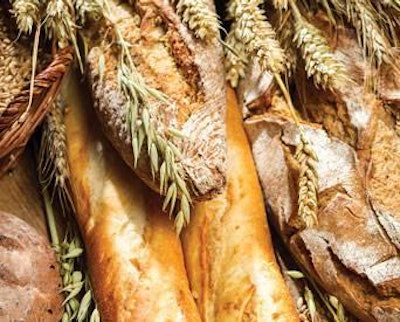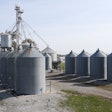
Bakery meal can originate from one single industry or be a mix of by-products from many different industries. For example, a large manufacturer of breakfast cereals may be able to produce a truckload of “fines” (small particles of broken breakfast flakes that are sieved away before packaging the product). In this case, the bakery product origin remains the same, although the exact composition may still be somewhat variable, depending on what breakfast cereal flakes were produced on each day. In contrast, a commercially available bakery meal, from an ingredient purchasing agent, may originate from a number of industries such as cookies, pasta, bread, dough, pop-corn, cakes, snacks, etc. If the number of raw materials is large enough to ensure not a single ingredient dominates the mix, then careful mixing can provide a fairly stable nutrient composition.
Variability
The greatest issue with bakery meal is inconsistency in nutrient composition. This is addressed by either buying from a constant source or by mixing many products from different sources. Even in this case, a rigorous quality control scheme is recommended (see Table 1).
Other issues are, first, the flowability of the product. If the product received does not flow sufficiently, then this is a mark of a high-fat content, high-moisture concentration, or inadequate grinding and mixing of the original material. This should then be addressed with the supplier.
Second, high-fat bakery meal is prone to lipid oxidation. If that happens, then the supplier should be instructed to add a suitable antioxidant at the mixing phase. Lipid oxidation and stale-bread taste is often the case when old, expired lots of bakery products are used in the bakery meal mix. In addition, in such cases, molds and yeasts may be of concern. All of the above signify product of low quality and such product should be avoided even at low prices.
Carcass fat
Occasionally, bakery meal from a nearby industry (for example, a pig farm near a pasta factory) is available in large quantities at really low prices (often given away for free as a means of disposing an undesirable waste). In this case, high inclusion rates are desirable (often replacing completely cereals such as maize and wheat). However, if the bakery meal available contains appreciable quantities of fat, this fat will affect carcass lipid characteristics (making it harder or softer than before). This should be taken into account during formulation, in addition to the other quality issues mentioned before.
Feed intake issues
Pigs and poultry will readily consume diets based on bakery meal. Indeed, high-quality bakery meal is considered an appetizing ingredient for diets for young animals. In its presence, other appetizing ingredients and additives become superfluous and may be removed. When animals refuse to eat diets high in bakery meal it is frequently the case of one of the quality issues already mentioned. Only infrequently bakery meal will be of bad taste due to its ingredients.
Pelleting
Bakery meal contains pre-gelatinized starch. This invariably increases pellet strength and reduces fines. But, if bakery meal is more than 10 to 20 percent of the final diet, then pellets may become too hard for piglets to chew, and this reduces feed intake. Figure 1 demonstrates this issue.

















